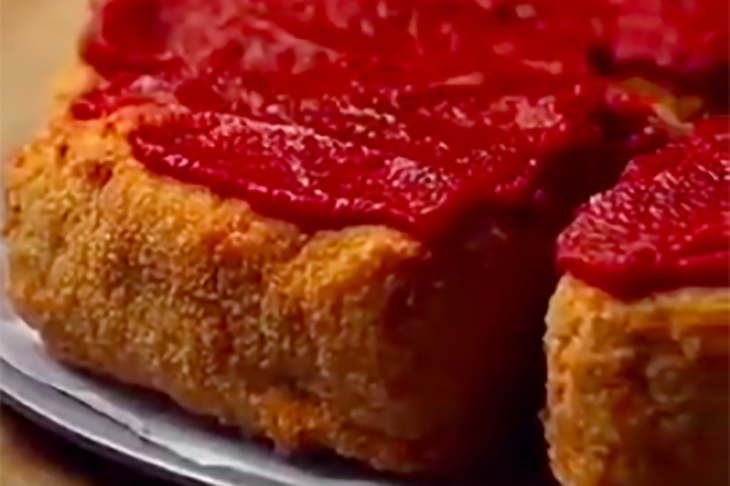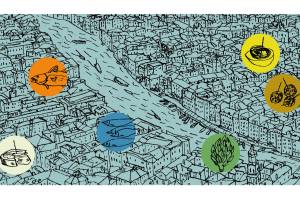The Greeks had Aesop, whose Fables attempted to teach moral lessons using, for the most part, a cast of animal characters. On the internet, we have a tale of a pizza.
But not just any pizza. A deep-fried BBQ chicken quesadilla pizza with a sour cream and mayonnaise dipping sauce. And what unfolded when the video of how to create it went viral this weekend is, when you think about it, the perfect fable for the age we live in. It’s an era where just about everything is fake, and even if it’s fake, it’s profitable.
Social media is full of cooking videos – filmed from above, often with time lapses or sped-up video, made popular by the likes of BuzzFeed. The internet has also been a hub of intentionally outlandish recipes, going all the way back to the likes of the ‘Bacon Explosion’ in 2008, which originated on a blog called BBQ Addicts. But the ‘pizzadilla’ was different, because it went viral on Twitter without context, and just when you thought the recipe was over, there was another step. And another. And another. Yashar Ali, a journalist who shared the video, captioned it only with ‘I’m calling the FBI.’
In spite of the recipe seeming like an amalgam of everything horrific about American food – we did just have to suffer through presidential candidates inhaling deep-fried creations at the Iowa State Fair, after all – it seems to have originated from the UK. Slightly under a month ago, the recipe for ‘Deep Fried BBQ Stuffed Chicken Pizzadilla’ originated on a site called Twisted Food, before the video went viral thanks to Twitter user @_kurlykay. Twisted Food seems to specialize in the exact kinds of recipes that go viral on the internet for their combination of complex instructions and heart-stoppingly unhealthy ingredients. Among its other tutorials include the ‘Sloppy Joe Cheesesteak Pizza Volcano,’ the ‘Giant Chicken Fajita Swirl Bun,’ and the ‘Chicken Cordon Bleu Meatball Pasta Bake.’
okay but I just wanna know WHY????? pic.twitter.com/BF49YX2jyc
— 𝕂𝕙𝕒𝕝𝕥𝕜𝕠𝕞 (@_kurlykay) August 23, 2019
But like much on the internet, there’s a profit motive behind the Pizzadilla. Twisted is a site run by a London-based digital publisher called Jungle Creations, which somewhat inexplicably seems to be able to get brands to pay for inclusion in many of its recipes; click around its house of horrors and you’ll see quite a few ways to get Bailey’s liqueur into over-the-top desserts or Heinz Beanz into bizarre lasagna creations. Twisted also runs a ‘delivery-only restaurant’ in London through Uber Eats. And there we have our first lesson from the Pizzadilla episode: on the internet, someone is always profiting from your amusement.
Then Shay Spence, food editor at People magazine, decided to actually cook the Pizzadilla, and all hell broke loose.
kind of tempted to make that deep fried bbq chicken deep dish quesadilla pepperoni pizza tonight
— Shay Spence (@chezspence) August 25, 2019
Spence’s recounting of the Pizzadilla process is worth a read. But not only is it hysterically funny (especially when the recipe takes longer than expected and Spence winds up drunker than expected), it shows a step-by-step unfolding of classic internet disappointment. The BBQ spice quantities weren’t liberal enough; the recipe routinely had to be frozen rather than chilled in order to prevent it from falling apart on the next step; and, as it turns out, the flavors were horribly mismatched. ‘I expected to like it in a gross-good kind of way,’ Spence wrote. ‘But the mixture of the sweet BBQ sauce, the pizza sauce and the dill sour cream…truly one of the most vile things I’ve ever eaten.’
The internet is full of things that we want to be true, because it validates what we want to think of the world around us. We secretly wanted to eat the Pizzadilla, for it to be the perfect end to a long and irresponsible Saturday night out. Some of us want to believe that not only did President Trump sincerely suggest that the US military control hurricanes by nuking them (and maybe he did?) but that he got the idea from watching one of the Sharknado movies on the SyFy Channel. Some of us still want to believe that the Clintons go around killing their enemies. Our love of hyperbole predates the era of cheap clickbait, but the rise of viral content has certainly egged on our addiction to it.
The dangerous part here is that if we want something to be true, we’re probably less likely to question it before going ahead and sharing it. This is somewhat innocuous when it’s a viral recipe, especially since Shay Spence’s Pizzadilla fact-check had the advantage of being sufficiently ridiculous to go viral itself. Most fact-checking does not take the form of a drunk guy in his kitchen. Typically, the truth is far less amusing or shocking. In spite of what digital media companies and attention-driven politicians want us to think, reality is still sometimes pretty boring.
And ultimately none of this chronic fakery in the name of telling a good story or fitting a preconceived narrative is really new; we just have new ways to amplify something that’s as old as human history. Head over to Wikipedia, that bastion of all things completely credible, and load up the page for Aesop himself. It states, plainly: ‘Aesop may not have written his fables.’


















